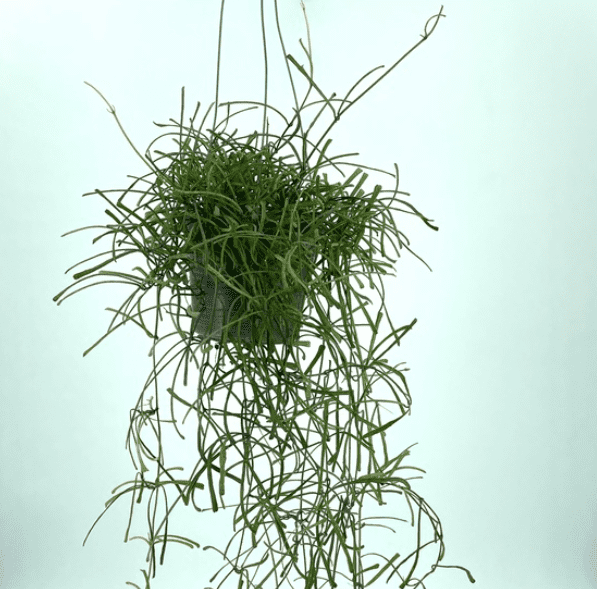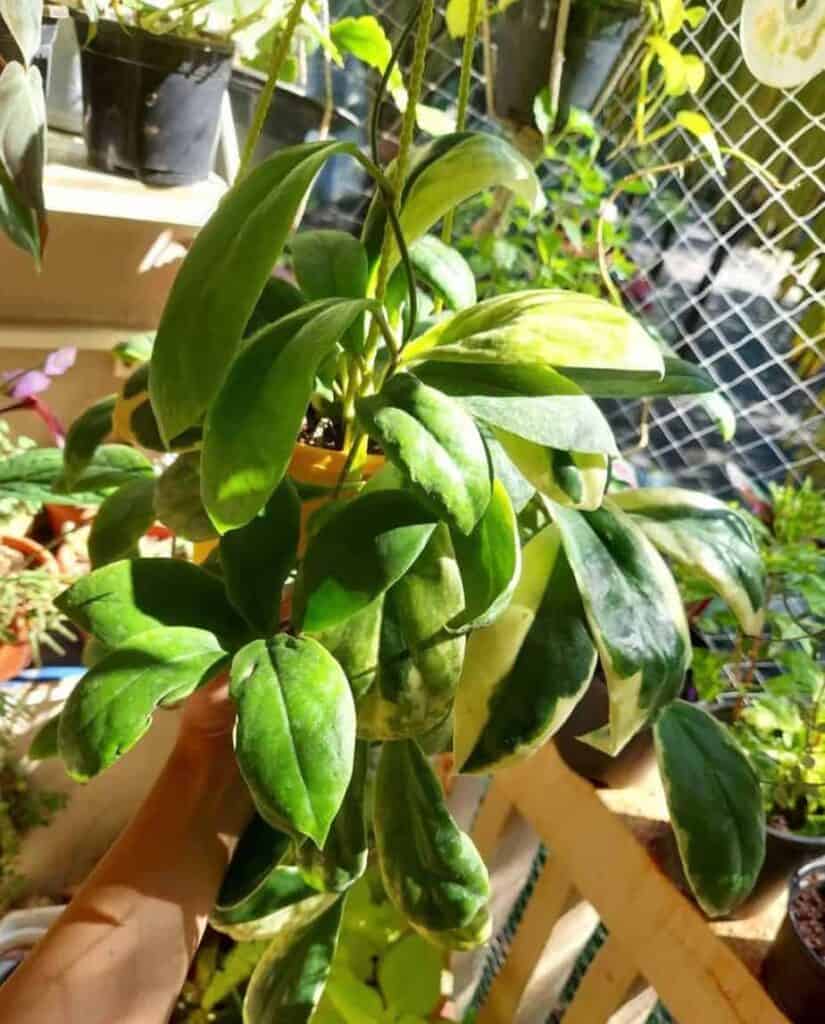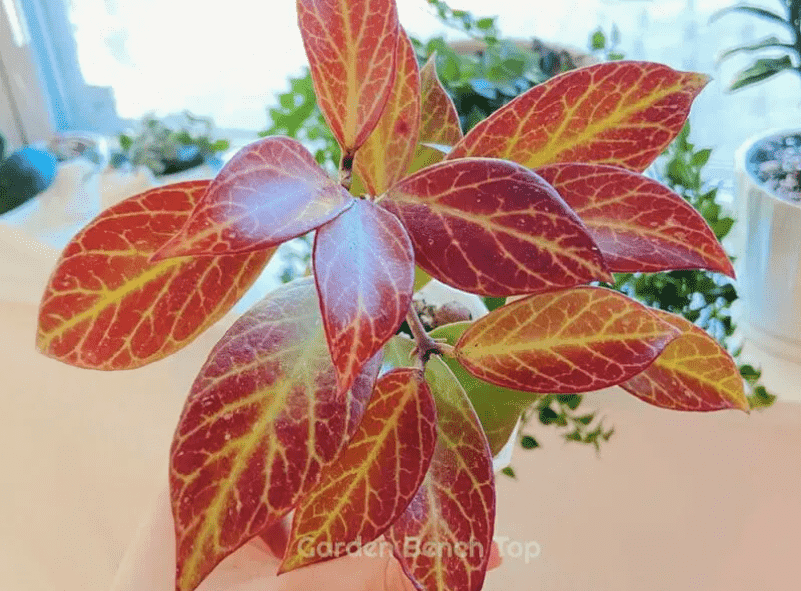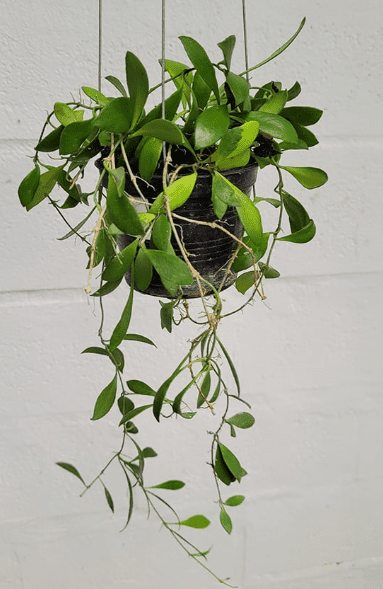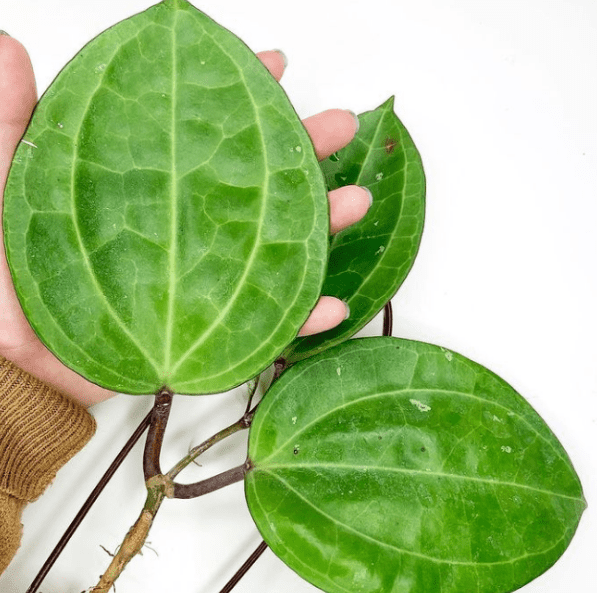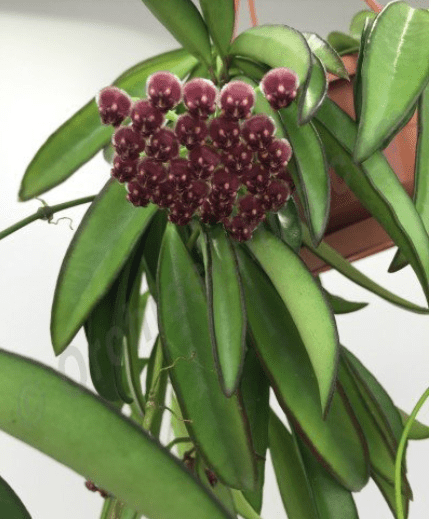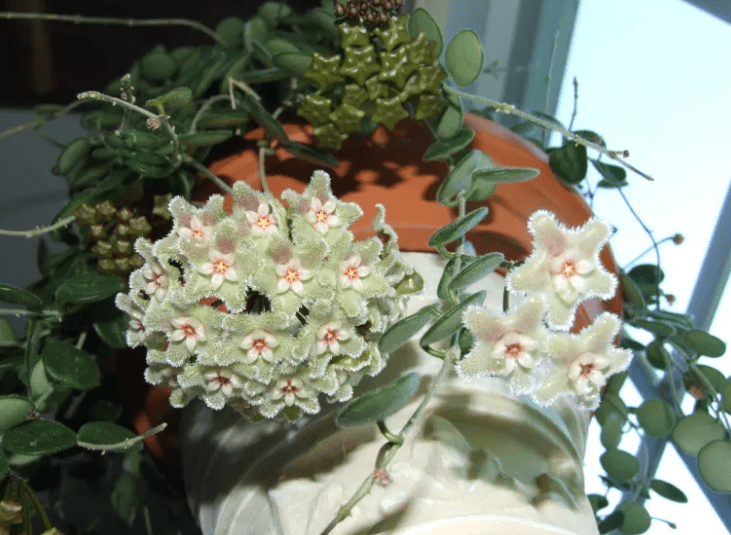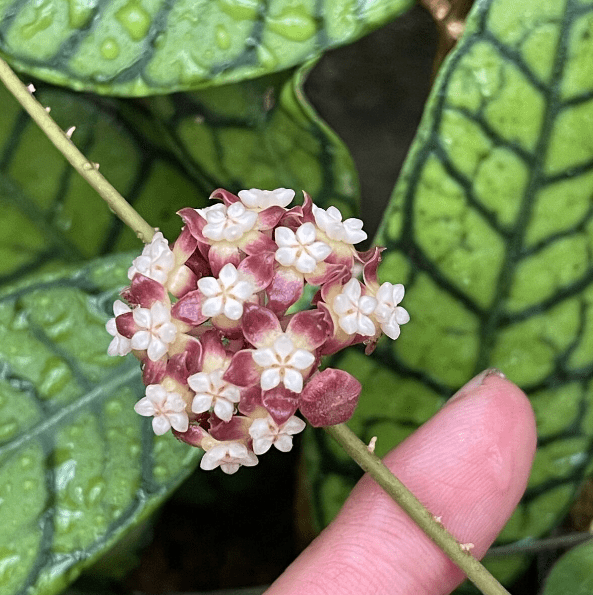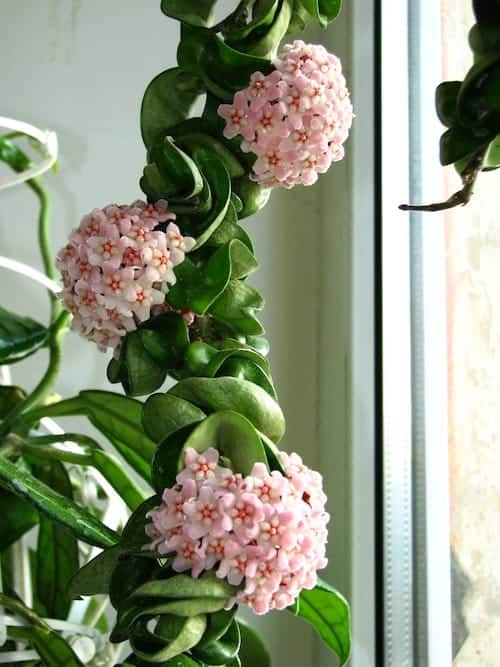The Hoya genus has a somewhat bad reputation due to their complex care, referred to as fussy diva plants. They’re also considered some of the most beautiful flowers and houseplants. Genus has over 500 accepted species, native to several countries of Asia such as Thailand, Malaysia, Philippines, India, and Vietnam.
Common names for Hoyas are Wax Plant, Wax Vine, and Wax Flower due to their succulent looks.
One can plant Hoyas at home, where their blooms depend on different factors, but they grow more on trees in an epiphytical way or on the tree barks from which they take all necessary nutrition.
Getting one Hoya to flower in a home setting is difficult, as they require warm weather, high humidity, specially mixed soils, and direct sunlight.
But if you wish to enrich your environment with this star-shaped flower plant, check out our list of the most expensive and rarest Hoyas you could purchase today.
10. Hoya kerrii
Average Size: 10-13 ft
Common Name: Sweetheart Hoya
Habitat: South-East Asia

photo source: Bunk Plants
Truly living up to the common name, Hoya kerrii is popular due to its heart-shaped leaves that grow next to small clusters of up to 25 flowers. Besides this rich foliage, Kerrii grows in unique variegation as a single leaf in a smaller pot. A perfect gift for anyone!
Kerrii is also one of the easiest Hoyas to plant as it has succulent qualities, surviving independently. It holds water longer, doesn’t need any special lighting, and doesn’t require any particular humidity like its cousins.
This genus isn’t expensive to purchase in both variants, usually selling for $10 to $30.
9. Hoya retusa
Average Size: 4 ft
Common Name: Grass-leafed Hoya
Habitat: Himalayas

photo source: Thai Orchids
Another smaller Hoya is Hoya retusa, native to the eastern Himalayas. Retusa is also known as Grass-leafed Hoya due to its long, grass-like leaves that can grow up to 10 inches in length. Plant fans said Retusa reminds them of Rhipsalis Cactus due to similarities in looks.
This genus of Hoya doesn’t require long to bloom, growing tiny heart-shaped flowers in around six months after planting. It’s perfect for the inside as it needs weekly watering, indirect sunlight, and warmer weather.
Retusa has a toxic milky latex inside the plant that can cause allergic reactions, so it’s best to keep away from animals and children.
8. Hoya incrassata
Average Size: 2-3 ft
Common Name: Common Wax Hoya
Habitat: Malaysia, The Philippines, Thailand

photo source: Plantophiles
For a small Hoya plant like incrassata, this plant has multi-shade foliage with its 10 inches spread of flowers. The foliage is green and shiny, with a distinctive fold in the middle, but it grows low, staying at the 3 ft height.
It is said that this genus is easier to grow as it requires the most minor care out of all Hoyas. The plant needs about two years to mature after planting before it blooms with 8 inches leaves and cream-yellow flowers in a star shape.
Like most Hoyas, incrassata loves humidity but does not like too much water in the soil.
7. Hoya sp. Sunrise
Average Size: 8-10 ft
Common Name: Hoya Wax Vine
Habitat: South-East Asia, Australia

photo source: Garden Bench Top
This Hoya genus does not have green leaves like most others but rather a mix of dark green and burgundy foliage. It takes beautiful teardrop-shaped leaves from Lacunosa and colors from Obscura.
After all, Hoya Sunrise is a hybrid of Hoya lacunosa and Hoya obscura, both climbing vines.
Hoya Sunrise needs weekly watering, sunlight, and warmer temperature to grow. It does not require much humidity, which is ideal as a houseplant. When it comes to soil, a mix of coco coir and perlite is perfect for plant nutrition.
6. Hoya leytensis
Average Size: 8-10 inches
Common Name: Wax Plant
Habitat: Philippines

photo source: Tropics at Home
Hoya leytensis is the smallest Hoya on our list, growing only 8 to 10 inches in length and 4 inches in foliage spread. It is rare to grow indoors, but it’s native to the Philippines. Leytensis grows pendants of tiny flowers in clusters of peach and red shades. An ideal plant for hanging baskets.
Flowers last up to 4 days, but the bloom repeats with proper care and suitable soil. It is best not to water it with too much water, as this plant thrives in warm weather and high humidity.
Truly one of the easiest Hoyas to take care of, along with Sweetheart Hoya.
5. Hoya sarawak
Average Size: 3-5 ft
Common Name: Cream Flower
Habitat: Borneo

photo source: Aroidsale
Most Hoyas are popular in South-East Asia, where they come from, and Hoya sarawak is from the same family, originating in Borneo, the largest island in Asia. Borneo has a tropical climate with high temperatures and humidity, which also works the best for this Hoya.
Sarawak has small leaves growing up to 2 inches, but they have a great length, foliage spreading to 32 ft. It is a great house plant if you have enough space for its magnificent growth and its white flowers that sometimes have a pink tint.
It does not stand too much water as it can affect its roots and cause root rotting.
4. Hoya wayetii
Average Size: 2.5 ft
Common Name: Hindu Rope Plant
Habitat: Philippines

photo source: Orchids Shop
The first Hindu Rope plant on our list is also known as Hoya wayetii, native to the Philippines. Unlike other genera, Wayetii has long, canoe-shaped leaves that are semi-succulent.
The leaves are bright green with darker edges, but the plant also blooms in clusters of burgundy flowers.
Flowers are sweet and light, growing in clusters of 25 round individuals. Hoya wayetii is often confused with Hoya shepherdii and Hoya kentiana, but it does not have many similarities.
It shares the common name with Hoya carnosa compacta, coming up on our list.
3. Hoya serpens
Average Size: 8-10 ft
Common Name: Wax-flower Hoya
Habitat: Himalayas

photo source: Vermont Hoyas
Hoya serpens is a trailing vine plant, smaller in size but with big, fuzzy flowers in light green. Found in the Himalayas, it usually does not do well in other temperature spans since it requires a warmer climate with a lot of humidity. The plant also grows in Malaysia, Thailand, and Indonesia.
Serpens flowers have a sweet aroma, especially when all the bloomed flowers are open. This genus is hard to grow because of the conditions it needs – if it succeeds in high temperatures/low humidity, it won’t flower. Still, growing it in cooler temperatures with high humidity will have a short lifespan.
2. Hoya callistophylla
Average Size: 10-20 ft
Common Name: Stiff-leaved Hoya
Habitat: Tall, Tropical Hardwood Trees at 900-2000 ft

photo source: My Home Nature
One of the rarest Hoya varieties is Hoya callistophylla, a big-leaved plant from Borneo. This plant features considerable growth, reaching almost 20 ft in height and a 2 ft spread. Callistophylla grows stiff, dark green leaves with darker lines over the surface, some calling it dragon-skin plant.
To grow the Callistophylla plant, you would need good soil and not that big of a pot to plant it, semi-shade and a little bit of water weekly, as it does not like too much of it.
Callistophylla produces sweet clusters of white flowers with yellow and red accents, the flowers growing in an epiphytic way.
1. Hoya carnosa compacta
Average Size: 6-20 ft
Common Name: Hindu Rope Hoya
Habitat: Eastern Asia, Australia

photo source: Plantophiles
The rarest and most expensive Hoya on our list is Carnosa compacta, also known as Hindu Rope Hoya. This genus of Hoyas has curly leaves that fall as a vine, ideal for hanging baskets or as a shelf decoration. The flowers are star-shaped like most Hoyas, growing in smaller clusters.
The price for this genus is extraordinary as one can find it for less than $100 if lucky. Or sold for $6,500 like one Carnosa was in 2020 on Trade Me Auction Site, becoming one of the most expensive houseplants ever sold. The buyer is unknown.
The reason for this specific Hoya to be this expensive is that Carnosa compacta is rarer to find, difficult to grow, and requires idyllic growing conditions such as well-draining rich soil, indirect light, and a lot of humidity.
The Takeaway
Hoya plants are a problematic genus to have and grow, as they tend to be on the more complicated side if you wish to have them as a houseplant. They require a lot of work, but they are still popular with people wanting to enrich their household décor.
After all, Hoyas have magnificent clusters of star-shaped flowers that have a sweet scent and rich colors. Add long, forest-green leaves to the mix, and you already have the perfect corner for your living room – all filled with these stunning flowers.
If you wish to purchase or grow any of the Hoyas from the list, or maybe some we have not mentioned, we suggest reading about their needs and developing conditions thoroughly before purchasing. If you reside in a warm climate with a lot of rain, you’re good to go!


